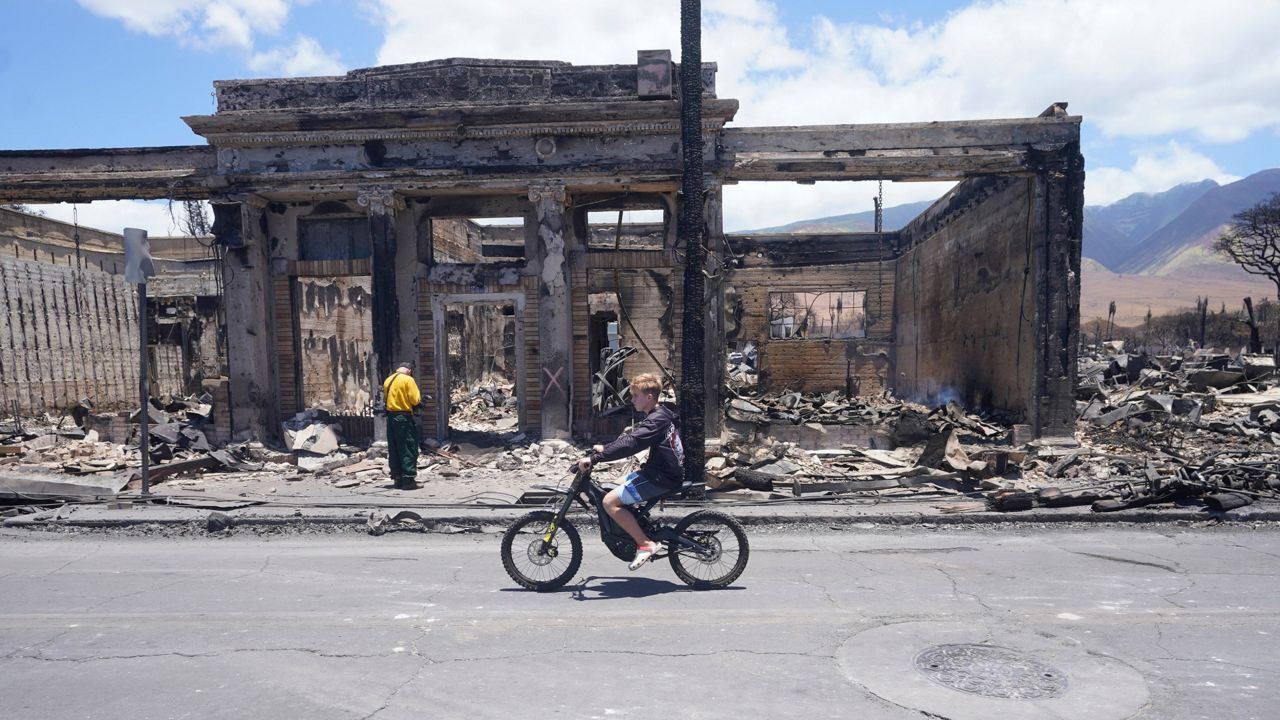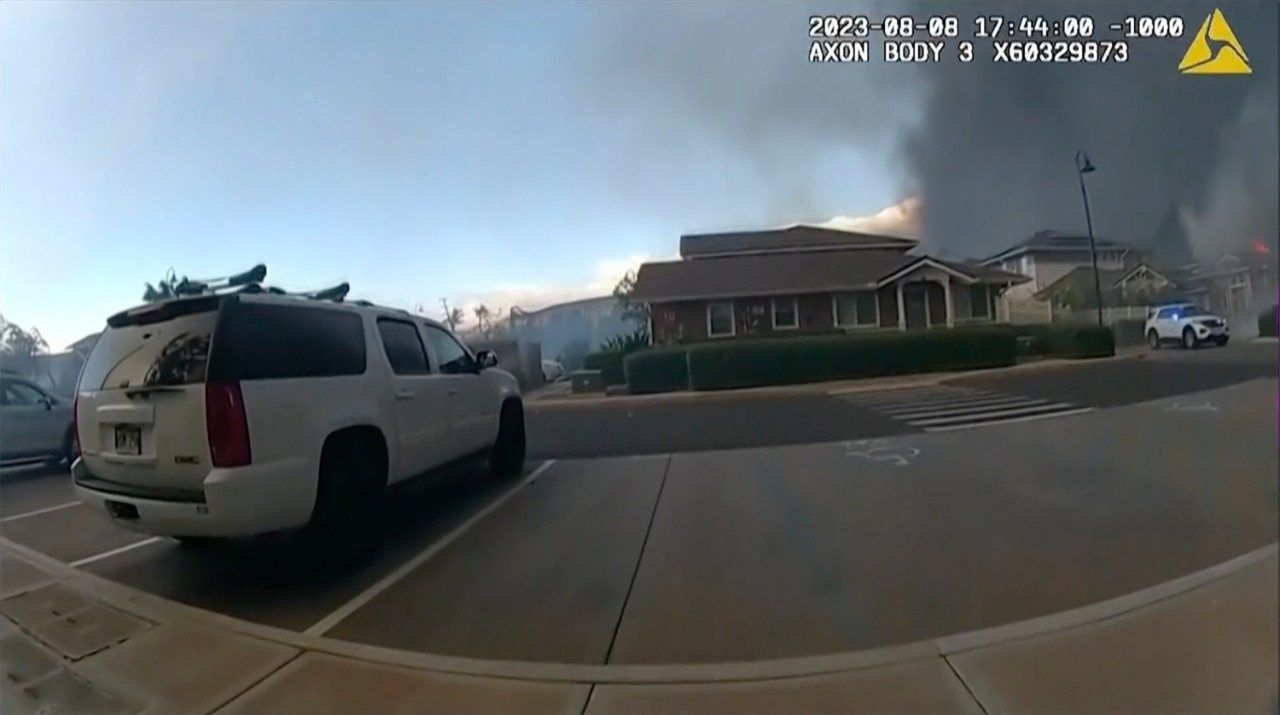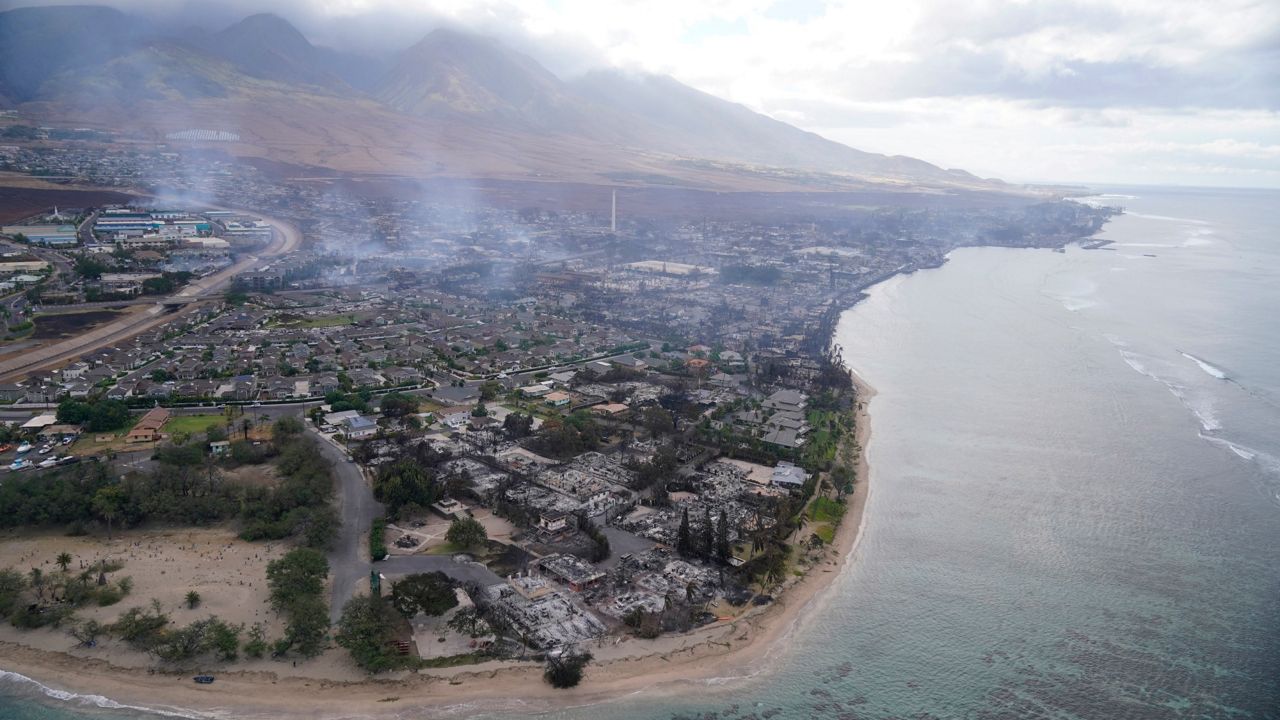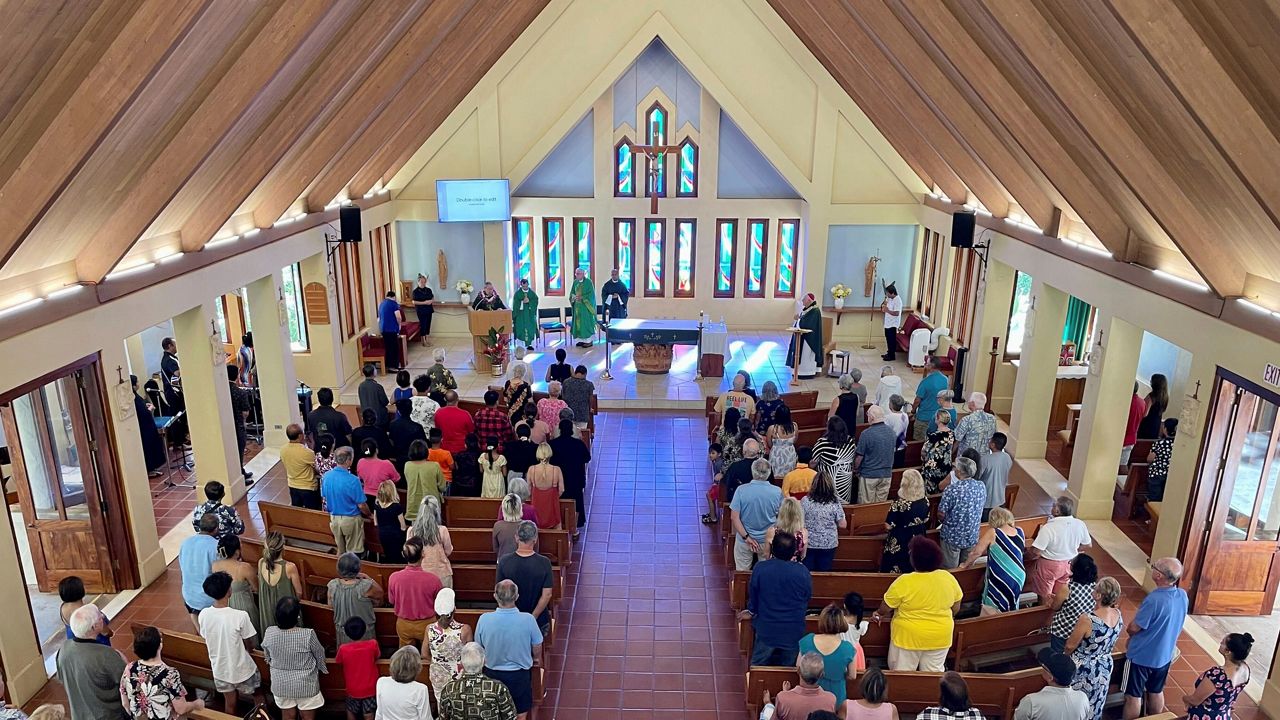Cleanup of areas destroyed in the Maui wildfires could end up being one of the most complex to date, federal officials said, given the island's significant cultural sites, its rich history including a royal residence and possibly remains of people who died in the disaster.
The first stage of cleanup started in late August, with around 200 Environmental Protection Agency workers in white protective gear removing toxic household debris from Upper Kula and the town of Lahaina, including gas cylinders, pesticides, fertilizers and battery packs used in solar power. They have monitored the air quality and sampled for heavy metals and asbestos.
The EPA expects to hand over responsibility later this month or in November to the U.S. Army Corps of Engineers, which will oversee removing the remaining debris over the next six to 12 months. About $400 million has been budgeted, but the cost could go higher to remove an estimated 400,000 to 700,000 tons of building debris from about 1,600 parcels that once had homes and businesses.
“This will be the most complex fire response to date,” said Corps’ debris subject matter expert Cory Koger, who since 2017 has responded to cleanups of seven wildfires sites including the Paradise, California fire that killed 85 people and destroyed 19,000 structures as well as several others in Oregon, Colorado and New Mexico.
“We need to expedite the cleanup for a number of reasons. One, they’re still residents living within the area. There are businesses still functional ... That’s a public health issue,” Koger continued, adding that there are also significant “cultural concerns” associated with the debris removal.
“There is this push-pull of doing it quickly but doing it right,” he said.
The Aug. 8 wildfire killed at least 97 people and destroyed more than 2,000 buildings, most of them homes. Seven weeks on, the first group of residents returned to survey the remains of their property and collect any belongings they could find.
Compared to fire cleanups in Oregon or California, this one poses what EPA Incident Commander Steve Calanog calls “unique challenges” for his team. The debris removal not only is occurring on an island in the Pacific Ocean, but Maui has no landfills certified to take hazardous waste. So the EPA is forced to ship hazardous waste to licensed disposal sites on the West Coast.
Cultural monitors, who are Native Hawaiians from Maui, are also accompanying the EPA and eventually the Corps during the cleanup. Lahaina was once the royal residence of King Kamehameha, who unified Hawaii under a single kingdom by defeating the other islands’ chiefs. His successors made it the capital from 1820 to 1845, according to the National Park Service.
Before any work begins on a parcel, a cultural assessment will be done to determine if anything might have cultural significance, such as burial plots or markers and certain types of plants or trees. The monitors are there to ensure there isn’t further harm to anything flagged in the assessment.
“Lahaina has a huge cultural and historic significance. We have to work with great precision, care and respect,” Calanog said. “And then, of course, the death toll. There’s considerable loss of life. Those are unique facets that make this work particularly challenging for us.”
Hawaiian kings and queens are buried in the graveyard of the 200-year-old historic Waiola Church, which, along with the nearby Lahaina Hongwanji Mission, was engulfed in flames. The fire also decimated historic Front Street — home to restaurants, bars and tourist shops — and heavily damaged what is believed to be the United States’ largest banyan tree.
“There is going to be more attention to detail. They have to go at a slower pace,” said Native Hawaiian Micah Kamohoali‘i, an archeologist and cultural specialist. “They can’t dig too far into the ground because there are so many generations of history buried in the ground.”
As of Sept. 29, the EPA had completed cleanup on over 1,000 of the 1,598 parcels that need to be cleared across Maui. All parcels cleared so far are residential properties, and the agency expects to finish the remaining residential sites in the coming weeks. It started work on the first of about 150 commercial parcels, which officials acknowledge will take longer.
After that, the Corps will bring in excavators, bulldozers and dump trucks to remove debris such as standing structures, vehicles and dead trees. Owners must approve the Corps coming onto their property, and a bill being debated at the Maui County Council will give residents an option of having the Corps do the cleanup for free or allowing them to hire their own contractors. Work would be stopped if human remains are found.
Much of the debate around waste removal is over environmental concerns versus the desire to rebuild. Authorities last month said the Hawaii Department of Health reported that sampling and monitoring of the burn sites did not “show evidence of poor air quality or any hazardous levels of contaminants in the air.” County officials, however, warned that ash “may contain toxic, cancer-causing chemicals with debris including broken glass, exposed electric wire and other objects.”
There are also discussions around where to put the waste removed by the Corps.
There are two landfills on Maui, a spokesperson for the county Joint Information Center said, and the island doesn’t currently have landfill space to handle all the waste from the fire. One of the landfills, Central Maui, was nearing capacity and had a more than $17 million expansion project planned to start next year. Emergency planners are looking at accelerating plans for that expansion.
The Corps said plans are being worked out to move debris to a temporary site then eventually to permanent disposal sites in Maui County. Some of the concrete and metal would be recycled.
“Of course, there is the huge need to respect and accommodate the desire of those who wish to return to their former homes and businesses,” said Wayne Tanaka, the executive director of Sierra Club of Hawaii. “But we do not want their trauma and suffering to be compounded by future harm to themselves, their families, or even future generations from avoidable toxic exposure.”
Based on the timeline of past disasters like the Paradise, California fire in 2018, rebuilding will happen but it could take years. Much of Lahaina is still littered with torched vehicles, blackened rubble, crumbled metal roofs, shattered glass, propane tanks and the foundations of what were homes and businesses.
Even so, Maui County Council Vice-Chair Yuki Lei Sugimura often hears from many anxious residents looking to return and build a new home.
“People are anxious for us to move forward because they want to be build, and that is that is probably just the predominant thing that we hear,” she said. “’You know how fast this is going to be and, you know how do we get in line?’”








